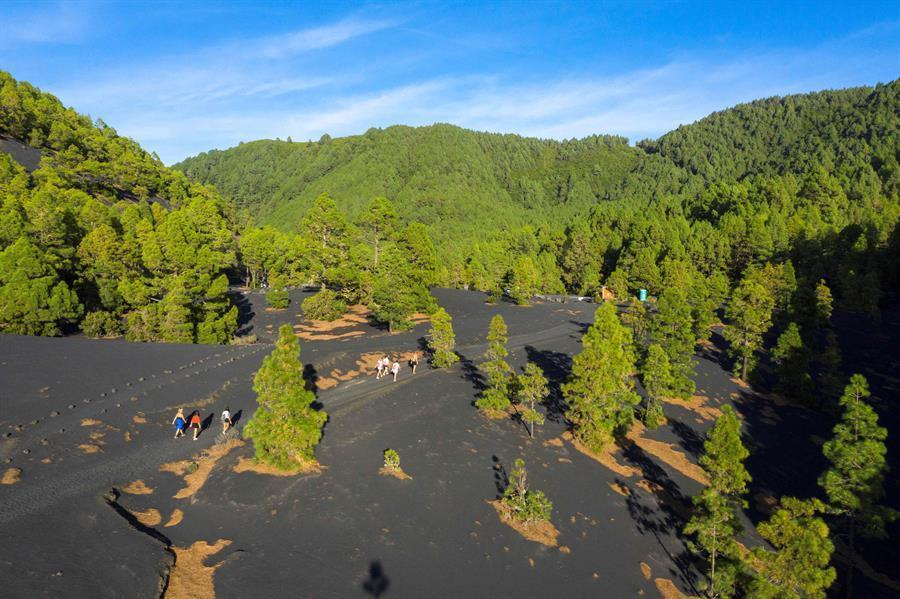Volcano draws visitors to Spanish isle
LA PALMA ISLAND

When the volcano erupted in La Palma last year, Teodoro Gonzalez Perez rushed to the Spanish island to see the lava flows with his own eyes, now he’s back for another look.
This time, he’s here to see the volcano closer up now it has quieted down.
“It’s like walking on the surface of a new planet,” said the 54-year-old nurse from the nearby island of Tenerife while hiking through a lush pine forest carpeted with black ash to reach the site.
“Visiting a volcano which recently erupted is an opportunity that only arises once in a lifetime,” he told AFP.
Since the volcano erupted on Sept. 19, 2021, spewing rivers of molten rock and ash plumes into the air, interest in visiting La Palma is booming.
The island is normally one of the less visited ones of Spain’s tourism-dependent Canary Islands off Africa’s northwestern coast.
In August, the average hotel occupancy on the island hit 90.9 percent, well above expectations, with visitors from the rest of Spain accounting for the bulk of the overnight stays, according to local hotel lobby group ASHOTEL.
“Before the eruption, we struggled to make the island known,” ASHOTEL’s vice president Carlos Garcia Sicilia told AFP.
“On the one hand, the volcano has been a misfortune, a huge blow to the island’s economy. On the other, I think half the planet has now heard of La Palma.”
While the images beamed around the world during the 85-day eruption focused on the destruction caused by the volcano, news reports also highlighted the tiny island’s charms, which has helped whet the appetite for travel to La Palma.
Nicknamed “La Isla Bonita” or “The Beautiful Island,” La Palma is a UNESCO-recognized biosphere reserve replete with verdant forests, rocky peaks and desert.
The ash and rivers of lava spewing from the volcano swallowed up more than 1,000 homes, cut off highways and suffocated lush banana plantations.
















